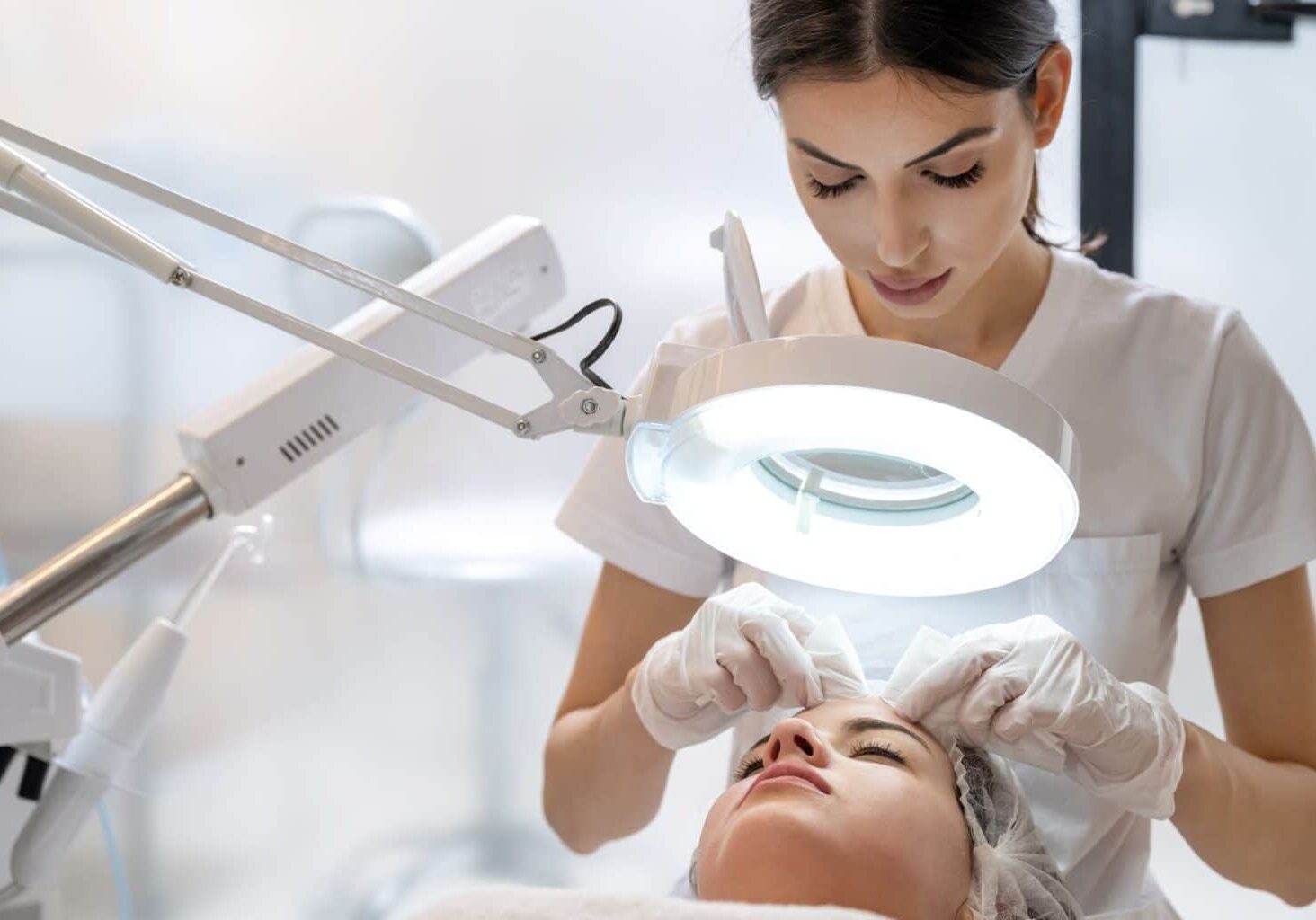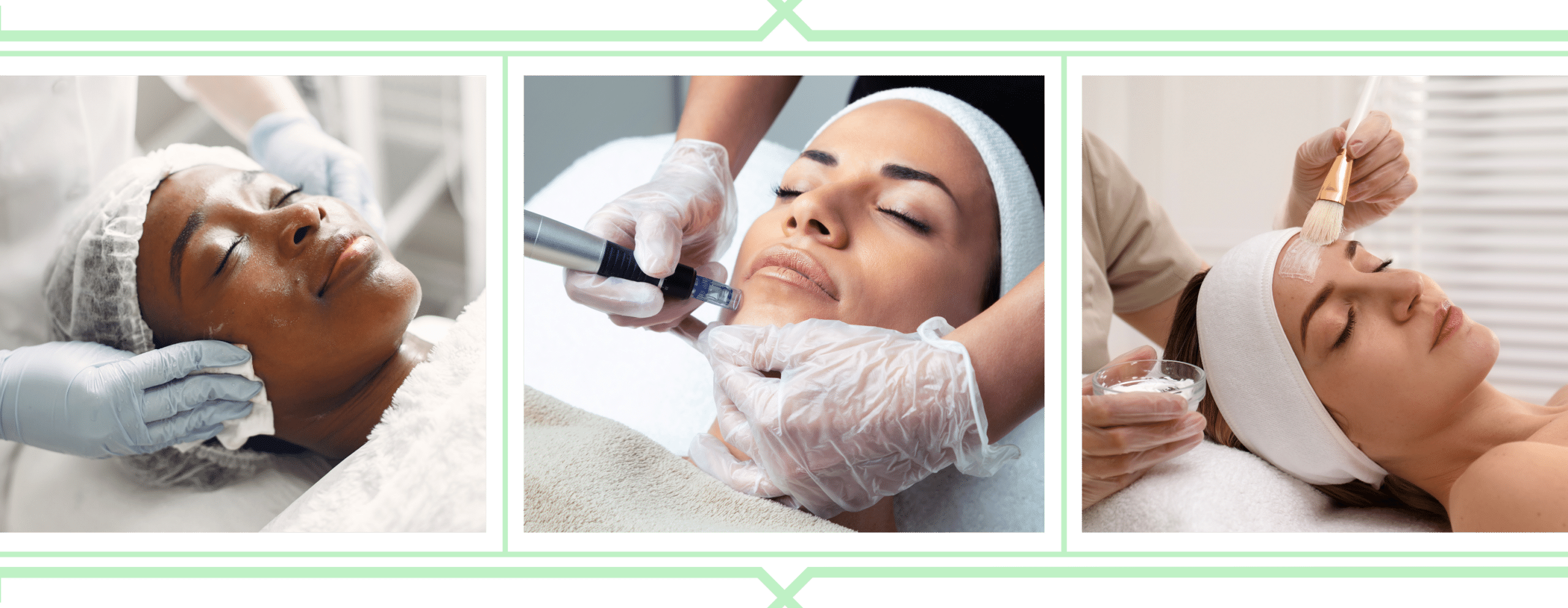What’s the difference between estheticians and master estheticians?
Last Updated: January 28, 2025

A young man books a consultation to address his chronic acne. As you open your mouth to discuss goals and potential solutions, he starts listing a dozen treatments he insists will kick his closed comedones to the curb: Trichloroacetic acid (TCA) peels. Microdermabrasion. Intense Pulsed Light (IPL) therapy. Radiofrequency (RF). Lymphatic drainage massages.
Unfortunately, his research at Google University didn’t teach him the difference between esthetician and master esthetician services. It never occurred to him that you might need an advanced master esthetician license to perform some of those treatments. He also doesn’t know if you are a master esthetician.
Realistically, your clients probably never learned about master estheticians vs estheticians. Very few of them know what a master esthetician can do in their state. Or, the spa you work for might not market their services and which employees are qualified to perform them. If you can easily explain the difference between estheticians and master estheticians, you just might save your clients’ skin—literally.
Please note this advice is not meant to be comprehensive. Always verify your state’s regulations and terms to ensure compliance.
What’s the difference between an esthetician and a master esthetician?
Aestheticians and estheticians are practically interchangeable. In contrast, the “master” title can really set you apart. (And no, it has nothing to do with successfully training a Padawan or proving your ability to wield the Force.)
What is a master esthetician, exactly? The primary difference between estheticians and master estheticians is that advanced or master estheticians get more training and experience than what’s required for a basic esthetician license. In return, the specialized knowledge they acquire with a master esthetician license allows them to provide more personalized and specialized treatments, Boca Beauty Academy said.
What is the highest level of esthetician?
A master esthetician license is the highest level you can achieve in the United States. So if anyone ever asks, “What is the difference between a master esthetician and a licensed esthetician?,” trick question. Both master and basic estheticians must meet state-specific licensing requirements to practice.
However, not all states recognize a master esthetician license. So, which ones do?
What states recognize a master esthetician license?
If you have your heart set on advancing your practice, it’s important to know what states recognize master estheticians.
Only seven states recognize the second tier of master or advanced estheticians. These states include Washington, Utah, Virginia, District of Columbia, Nevada, Oregon, and Minnesota. Known as two-tier states,they use the terms “master” or “advanced esthetician” for licensing or regulatory purposes, the NCEA explains.
How to Become a Master Esthetician
Are there major differences between estheticians’ and master estheticians’ training?
Master esthetician requirements may differ from state to state. Typically, however, to become a master or advanced esthetician, you must first complete the necessary training for a basic esthetician license.
For example, let’s say you want to become an advanced or master esthetician in Utah. First, you would get a license to work as a basic esthetician. This requires 600 hours of classroom and hands-on learning and passing an exam, the Skin Science Institute says.
Next, you would earn your master esthetician license. This requires another 600 hours of training. In Washington State, you would finish 750 hours of basic esthetician training, then an additional 450 for your master esthetician license.
You can choose to take a comprehensive program for basic and master esthetics, Skinworks School of Advanced Skincare said. Alternatively, if you finished a basic esthetician program previously, you can do your advanced training separately. In states like Utah, you must also pass separate theory and practical exams.
How long does it take to become a master esthetician? How long is the master esthetician program? If you take a full-time comprehensive course, you should meet your master esthetician requirements in about 40 weeks, Skinworks wrote.
What are the benefits of being a master esthetician?
Now, let’s get to the fun stuff. How are esthetician vs master esthetician responsibilities different? What can a master esthetician do that others can’t?
Being an advanced or master esthetician has unique perks. According to Evergreen Beauty College, they can offer more advanced services, work in a bigger variety of spaces, and use more specialized tools than general estheticians. As a result, they can often access higher-paying jobs, expand their client base, and generate more income.
More specifically, what can an advanced esthetician do that others can’t? The Skin Science Institute and the Mandalyn Academy list a few examples, including:
- Microdermabrasion.
- Body wraps.
- Microneedling.
- Advanced facials.
Speaking of income, how much do master estheticians make?
This is another huge benefit of achieving this distinguished title. As of January 2025, the average, nationwide master esthetician salary is $66,900 per year, or $32 per hour, according to ZipRecruiter. By comparison, Cosmetology Guru says the average master esthetician salary ranges from $27,600-81,320 annually.
To learn more about average salaries, read our article about where estheticians make the most money.

Other Questions About What a Master Esthetician Can Do
You probably have some situational questions about the differences between estheticians and master estheticians.
Can a master esthetician do injections? Can you do Botox as a master esthetician?
A lot of clients want to know if master estheticians can do Botox. Unfortunately, there are very few states that allow even master estheticians to perform injections. Even then, those states will likely require a physician’s supervision, among other prerequisites. None of them permit independent injections at this time, FACE Medical Supply says.
FACE Med breaks down which states allow limited injections here.
Can master estheticians do microneedling? Do you have to be a master esthetician to dermaplane?
Yes, many states allow advanced or master estheticians to perform microneedling. Basic or general estheticians cannot.
What’s the difference between a master esthetician vs medical esthetician?
Some master estheticians choose to work in medical spaces and assist practitioners like plastic surgeons or dermatologists. They might call themselves a “medical esthetician.”
If you hear people debating master estheticians vs medical estheticians, note there’s no distinct, official licensing for a medical esthetician. Medical esthetics is simply esthetics in a medical space. You can’t treat medical, physical, or mental ailments. The scope of your services should be purely cosmetic.
The Final Difference Between Estheticians and Master Estheticians: Not-So-Basic Claims
When you compare estheticians vs master estheticians, advanced estheticians have more opportunities. They’re trained to offer more complex services. They can work in medical spas, plastic surgery offices, or dermatology offices. If you live in a state that recognizes master esthetician licenses, this can be an exciting opportunity to diversify your skills, explore new career opportunities, and expand your income.
Here’s a quick chart to summarize the key differences between estheticians and master estheticians:
| Feature | Esthetician | Master Esthetician |
|---|---|---|
| Training Requirements | 260-1000 training hours. Plus potentially passing one or more exams. |
Master esthetician requirements plus 450-600 additional hours. |
| Scope of Services | Skincare fundamentals, like facials and basic hair removal. | Advanced and more complex skincare treatments. |
| Work Environments | Salons, spas, beauty counters. | Esthetician spaces, plus medical spas and specialist offices. |
| Average Income | $22/hour nationwide. | $32/hour nationwide. |
| States Where Recognized | All | Washington, Utah, Virginia, District of Columbia, Nevada, Oregon, and Minnesota. |
But let’s not forget: Taking on more complex, expensive services also exposes you to additional, more expensive claims.
So if you’re determined not to be a basic esthetician, don’t let your insurance be basic, either.
At WellnessPro, we believe an esthetician’s coverage should make you feel secure, even when life throws a few blemishes your way. Apply for a quote to get started in minutes.
